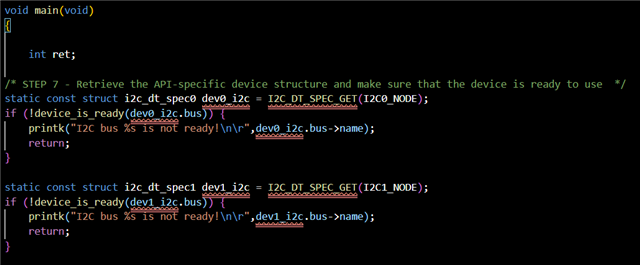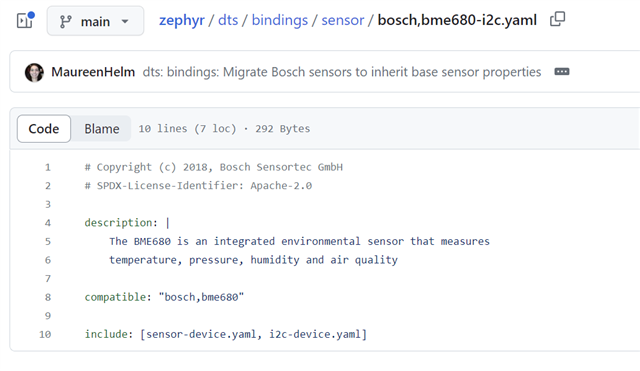I want to get sensor data from the Bosch BNO055 and the NXP MPR121 to the nRF52840 (DK, for now) using I2C. I completed the Nordic Connect SDK Fundamentals course, and am trying to adapt Lesson 6 Exercise 1 to be for two sensors; however, if I try to set them up through one port (i2c0), Zephyr doesn't have the appropriate .yaml files for my sensors, and I also don't have an example main script that works with sensors this way. What I'm now trying to do is put one sensor on the i2c0 port, and one on the i2c1 port, using the same formatting as in the Exercise overlay:
&i2c0 {
MPR: MPR@5a{
compatible = "i2c-device";
status = "okay";
reg = < 0x5a >;
label = "MPR";
};
};
&i2c1 {
BNO: BNO@29{
compatible = "i2c-device";
status = "okay";
reg = < 0x29 >;
label = "BNO";
};
};
But, when I continue onto my main script, I'm having trouble writing it for both ports. Even starting out with this (see Image), it gives me errors because I can't alter the name of the struct (at least, I think that's what the error means). 
- What am I doing wrong?
- Am I going about this the right way?
- Is there an example code that could be created or that I could follow?
- How should I alter the Exercise files to work with 2 i2c devices so I can get sensor data from both at the same time?
Thank you so much! Apologies--I'm just starting out still.



